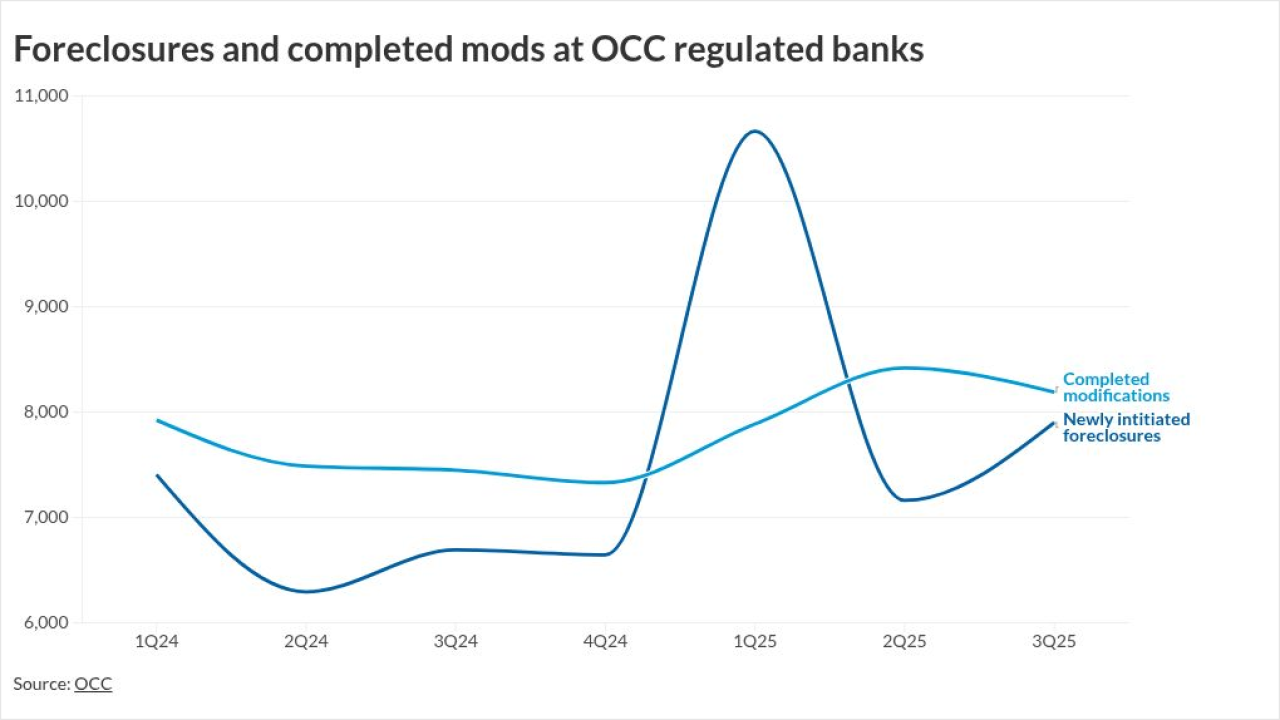

A decision by some banks to de-emphasize commercial real estate is creating openings for institutions with the capacity — and the stomach — to scale up.
Banks, especially those that are below regulators' preferred 300% ratio of CRE to total risk-based capital, should have room to take on more exposure, and could do so at potentially better terms and pricing.
Fulton Financial in Lancaster, Pa., is among the institutions looking to take advantage of competitors tapping the brakes.
"Given the current environment, we're seeing opportunities to grow CRE," said Curt Myers, the $19 billion-asset company's chief operating officer. "We have remained well-diversified. We have capacity and we have good, strong borrowers and prospects. We do think that we can continue to grow that business."
Fulton's six banks had an average ratio of CRE to total risk-based capital of 180.8% at Dec. 31, according to BankRegData.com. The ratios ranged from 70.6% at its FNB Bank in Danville, Pa., to 201.7% at Lafayette Ambassador Bank in Bethlehem, Pa.
Fulton also believes it has more leverage negotiating deals now compared to years past.
"A lot of times our kind of standard policy and credit practice does not allow us to win deals in this space," Myers said. "I think we're just having better success getting the terms and conditions that we want…When the CRE market's really, really hot, we just don't want to usually go there for just anybody."
There are instances where it might make to push more into CRE, said Casey Haire, an analyst at Jefferies, including a steepening yield curve and an easing in competition as some "smaller players" get pushed out due to regulatory pressure. "If you're under 300%…there's going to be growth opportunities, absolutely," he said.
UMB Financial in Kansas City, Mo., is also been keen on making more CRE loans. UMB's bank had a 116.6% ratio of commercial real estate to total risk-based capital at Dec. 31.
CRE and construction loan balances have increased by $1.7 billion over the past seven quarters, Mike Hagedorn, the $20.7 billion-asset company's vice chairman, said during UMB's quarterly conference call on Jan. 25.
"We monitor our portfolio concentrations and continue to apply the same disciplined underwriting standards to investment CRE as we do with all lending activity," Hagedown said, though he adding that loan production could become "somewhat muted" and UMB's current CRE book matures.
There are banks with high CRE concentrations that remain interested in making more loans, including Bank of the Ozarks in Little Rock, Ark., which had a 387.8% ratio.
George Gleason, Bank of the Ozarks' chairman and CEO, has frequently touted expertise, in terms of customer selection and underwriting, to justify taking on more exposure.
"We were comfortable then with our level of CRE lending and…we are even more comfortable with the quality of our portfolio, our exceptional rate of portfolio growth, and our CRE levels today," Gleason said during a conference call last year. "The regulatory guidelines mandate that if you have a CRE concentration, extra safeguards should be in place. We totally agree with that."
That's not to say that all banks are behaving rationally.
U.S. Bancorp in Minneapolis, for instance, is being more cautious in CRE based on a belief that some institutions are continuing to stretch, Richard Davis, the $446 billion-asset company's chairman and CEO, said during a Jan. 18 call to discuss fourth-quarter results. The ratio of CRE to total risk-based capital at U.S. Bank was 96.4% on Dec. 31.
"There are a lot of smaller banks that are doing some things that you guys aren't even writing about because you don't follow the small banks," Davis told analysts on the call without singling out any specific banks. "But we're in the middle of that and we're not going to play."
Bankers noted that there are different levels of risk when it comes to commercial real estate, depending on things such as the market, the type of property and its proposed use.
Davis, for instance, pointed out that about 40% of U.S. Bancorp's CRE book consists of properties "in small communities."
Fulton, for its part, has "tended to stay away from the really hot and highly discussed product types that have … been more volatile," said Meg Mueller, the company's chief credit officer. The company "will continue to be consistent in our practice."





